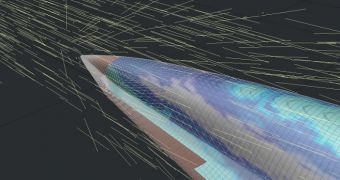Officials at the US Defense Advanced Research Projects Agency (DARPA) announce the beginning of the new Integrated Hypersonics (IH) program, an effort to restore the supremacy of the US Air Force (USAF) on any battlefield.
The agency was one of the main drivers that led to the development of stealth technology for aircraft, 30 to 40 years ago, creating aircraft capable of evading radar detection, and increasing the country's national security by providing it with a tactical advantage.
Now that other countries are learning how stealth works, and how to counter-act it, having access to a radar-evading aircraft is no longer enough. One possible direction of moving forward, and the one DARPA seems most interested in, is hypersonic technology.
An aircraft that flies below the speed of sound is called a subsonic airplane, while one that travels above the speed of sound is called supersonic. In order for an aircraft to be cataloged as hypersonic, it needs to fly beyond Mach 5 (five times the speed of sound).
But DARPA is interested in providing the US Department of Defense with extreme hypersonic flight, as in vehicles that can travel at Mach 20. This would enable the DOD to deploy a fleet of strategic bombers, for example, anywhere in the world in under an hour.
“DoD’s hypersonic technology efforts have made significant advancements in our technical understanding of several critical areas including aerodynamics; aerothermal effects; and guidance, navigation and control, but additional unknowns exist,” says Kaigham J. Gabriel.
The official, who is now the acting director at DARPA, says that resolving these unknowns is the purpose of the new IH program. “History is rife with examples of different designs for ‘flying vehicles’ and approaches to the traditional commercial flight we all take for granted today,” he says.
“For an entirely new type of flight – extreme hypersonic – diverse solutions, approaches and perspectives informed by the knowledge gained from DoD’s previous efforts are critical to achieving our goals,” he goes on to add.
On August 14, the agency plans to host a Proposers' Day event, during which it will provide details on the technical areas where advancements need to be obtained before the entire field moves forward.
“We do not yet have a complete hypersonic system solution. Programs like Integrated Hypersonics will leverage previous investments in this field and continue to reduce risk, inform development, and advance capabilities,” concludes Gregory Hulcher.
He is the director of Strategic Warfare at the Office of the Under Secretary of Defense for Acquisition, Technology and Logistics.

 14 DAY TRIAL //
14 DAY TRIAL //